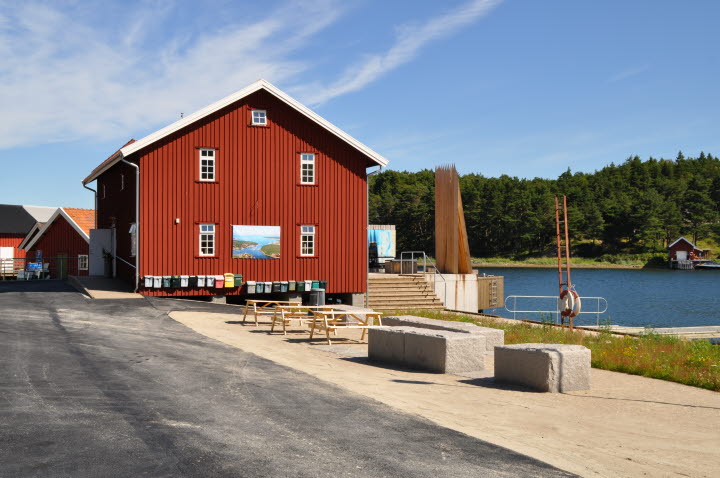Rossö history
Strömstad
A calm and peaceful community with piers and boathouses facing Råssö Sound. Who could imagine that in the 1920s, this place was Sweden’s second-largest center for lobster trade? History has left its marks, and you can also visit the harbor warehouse, Rossö entrance, at Rossö harbor. Here, there is an exhibition about lobster fishing and a café.
Rossö as a lobster center
On Rossö, people have always lived with one foot in the sea and one on land: fishing, small-scale farming, boat building, barrel making. On both sides of the sound, there were herring salteries. But the major business for Rossö became lobster. In the 1920s, Långesand, along with Smögen, was the heart of the lobster trade.
Swedish lobster had appeared on fine tables in Holland, Scotland, and England as early as the 1500s, but for a long time it was everyday food for people along the coast. When the great herring period of the 1700s ended in 1809, the fishing population was forced to find new ways to make a living. Many made lobster traps, and lobster catches increased. By the mid-1800s, it had truly become a luxury item in the big cities. Most people in the area were involved in lobster fishing. Each buyer had their suppliers, from Bohuslän to Hvaler in Norway and all the way to Stavanger. Catches were stored in traps, which at times filled the entire Rossö Sound, over 500 of them, each holding about 200 lobsters. On a small islet, one of the cranes used to lift the traps is still standing. When it was time, they would go down to "breggle," scoop up the lobsters. It was hard work when the traps were covered with ice and snow, and there was a risk of being pinched or losing a finger, especially if the lobsters were stunned by sticking a sharp tool into the muscle and perhaps missing one. It was safer to lock the claws with sail thread or rubber bands. Bike inner tubes cut across worked well.
In Överby, there was a railway station. The lobsters were delivered live by train.
Packed in wooden boxes with ice, newspaper, and wood wool, they could survive for up to four days. Lobsters were stored in the sound until 1990, but the heyday ended in the mid-1960s




